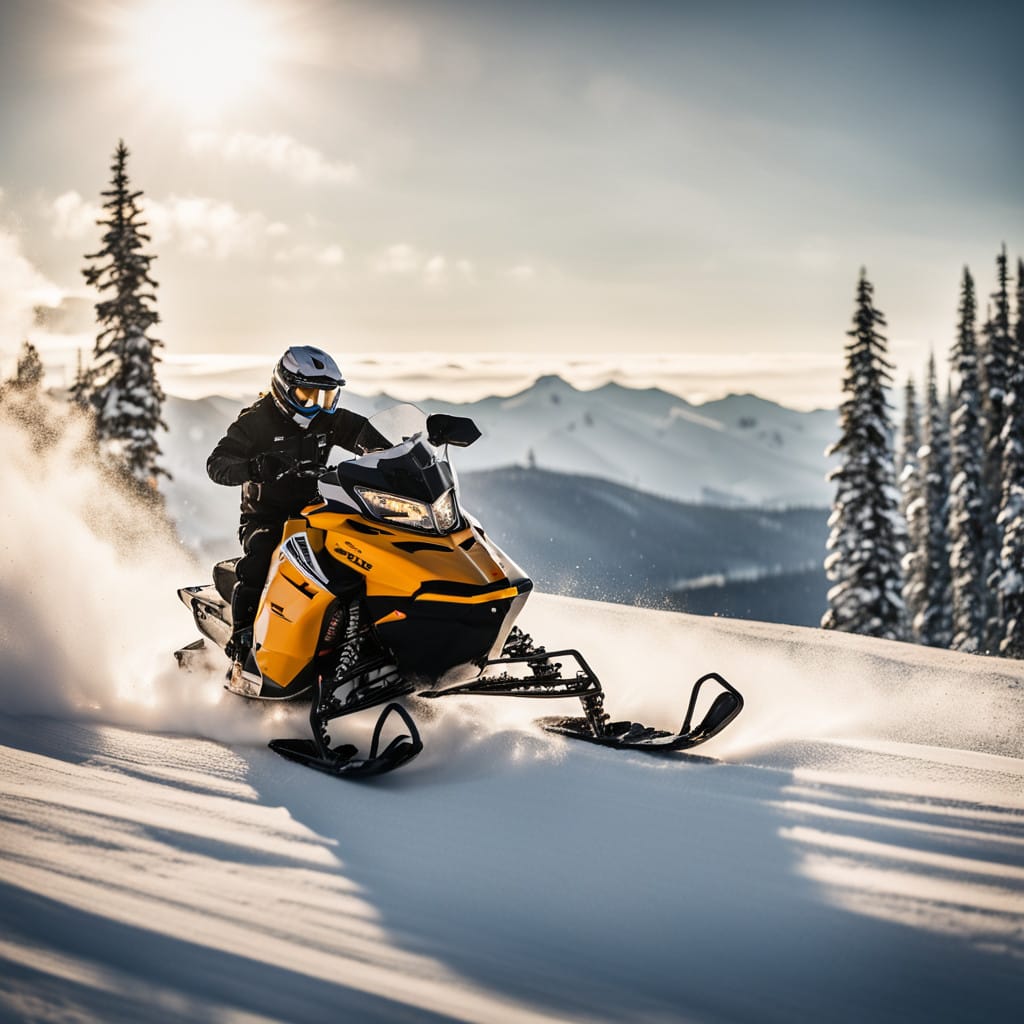
Exploring the Thrills and History of Snowmobile Racing
Snowmobile racing is an exhilarating sport that combines speed, skill, and the beauty of winter landscapes. Enthusiasts worldwide embrace the challenge of maneuvering powerful snow machines across snow-packed tracks, trails, and frozen lakes. This high-energy sport has grown from humble beginnings into an organized activity enjoyed by amateurs and professionals alike. Its global reach and appeal continue to grow as people discover the unique excitement it offers.
The Origins and History of Snowmobile Racing
The history of snowmobile racing dates back to the invention of the snowmobile itself. In the early 20th century, inventors began creating machines designed to traverse snowy terrain. The first practical snowmobile was developed in 1922 by Joseph-Armand Bombardier, a Canadian mechanic. His invention revolutionized winter transportation and laid the foundation for snowmobile racing.
Competitive snowmobile racing emerged during the 1960s as recreational use of snowmobiles increased. Events were initially informal, with friends and neighbors gathering for friendly competitions. By the late 1960s, organized races were being held in Canada and the United States. The International Snowmobile Racing Association (ISRA) was formed to establish standardized rules and foster growth.
As the sport gained momentum, technological advancements in snowmobile design enhanced performance. Manufacturers such as Polaris, Arctic Cat, and Ski-Doo began producing high-performance machines tailored for racing. The 1970s and 1980s saw the emergence of iconic racing events, such as the International 500 Snowmobile Race in Michigan and the Iron Dog in Alaska.
Today, snowmobile racing encompasses a variety of formats, including oval track, snocross, drag racing, and cross-country. These disciplines cater to different skill levels and preferences, ensuring the sport’s inclusivity and widespread appeal.
Global Popularity and Participation
Snowmobile racing’s popularity extends beyond North America, reaching enthusiasts in Europe, Scandinavia, and parts of Asia. In countries like Sweden, Finland, and Norway, snowmobile racing is an integral part of winter sports culture. These regions boast extensive snowy landscapes ideal for racing and recreational riding.
In Europe, competitions such as the European Snowmobile Racing Championship attract skilled riders from across the continent. Russia also has a strong racing scene, with events that showcase the power and durability of snowmobiles in extreme weather conditions.
Snowmobile racing has also gained a following in Japan, where snow-covered northern regions like Hokkaido provide perfect conditions for the sport. Additionally, some South American countries with snowy mountain ranges have embraced snowmobiling as a recreational activity, although competitive racing remains limited in those areas.
The global appeal of snowmobile racing continues to grow due to improved accessibility and technological advancements. Snowmobile manufacturers have expanded their markets, and social media platforms have made it easier for fans and participants to share their experiences. This digital connectivity has helped spread awareness and inspire a new generation of racers.
Amateur Snowmobile Racing: A Gateway for Youth and Communities
Amateur snowmobile racing provides an entry point for enthusiasts of all ages, fostering community engagement and skill development. Many grassroots organizations host local races that cater to families, youth, and beginners. These events often serve as a stepping stone for participants aspiring to compete professionally.
Youth snowmobile racing programs are particularly popular in regions with a strong snowmobiling culture. In the United States, organizations like the Snowmobile Racing Youth Development Program focus on teaching children the fundamentals of the sport. These programs emphasize safety, sportsmanship, and technical skills, creating a nurturing environment for young racers.
Schools in snowy regions sometimes incorporate snowmobile racing into extracurricular activities. These initiatives allow students to explore the sport while developing teamwork and leadership skills. Community-based events often include amateur races, showcasing the talent and enthusiasm of local participants.
Amateur racing events are typically held on closed courses or natural terrain. Participants compete in various categories based on age, machine type, and skill level. These events celebrate the spirit of competition while promoting a sense of camaraderie among racers and spectators.
Professional Snowmobile Racing Leagues and Events
Professional snowmobile racing leagues elevate the sport to new heights, attracting elite athletes and large audiences. The International Series of Champions (ISOC) is one of the most prominent organizations, hosting high-profile events like the AMSOIL Championship Snocross. This series features intense head-to-head races on challenging tracks with jumps, tight turns, and technical obstacles.
The World Snowmobile Association (WSA) also plays a key role in promoting competitive snowmobile racing. It organizes events that highlight different racing formats, such as cross-country and oval track racing. Other notable professional events include the Iron Dog, known as the longest snowmobile race in the world, and the Eagle River World Championship Derby.
In Scandinavia, the Swedish and Finnish snowmobile racing leagues have a strong following. These leagues organize national championships and support local clubs, ensuring that talented racers have opportunities to showcase their skills. European events often feature international competitors, adding excitement and diversity to the field.
Professional racers are celebrated for their technical expertise and physical endurance. Sponsorships and media coverage further elevate the sport, drawing attention to its most talented athletes. The combination of thrilling performances and passionate fan engagement continues to fuel the growth of professional snowmobile racing.
Social and Political Significance of Snowmobile Racing
Snowmobile racing holds social and cultural significance, particularly in regions where winter sports are deeply rooted. The sport fosters community spirit, bringing people together to celebrate shared interests. Local events often become annual traditions that strengthen bonds among residents and attract tourists.
Politically, it has contributed to discussions about environmental conservation and land use. Racers and organizers frequently collaborate with environmental groups to promote sustainable practices. This includes minimizing the ecological impact of races and advocating for responsible snowmobiling in natural areas.
In indigenous communities, snowmobiles play a vital role in transportation and cultural practices. It provides a platform to showcase these communities’ skills and traditions. Events often highlight indigenous contributions, fostering mutual respect and understanding.
The sport also influences economic development by boosting tourism and supporting local businesses. Races attract spectators from far and wide, generating revenue for hotels, restaurants, and shops. This economic impact underscores the importance of snowmobile racing as more than just a recreational activity.
Rules and Regulations of Snowmobile Racing
Snowmobile racing follows a structured set of rules to ensure fairness, safety, and competitive integrity. While specific regulations may vary depending on the racing format, several fundamental principles apply across all events.
General Rules
- Eligibility: Racers must meet age and licensing requirements set by the organizing body. Youth categories often have additional restrictions.
- Snowmobile Specifications: Machines must comply with technical standards, including engine size, weight limits, and safety features. Modifications are typically regulated to maintain parity.
- Protective Gear: Racers must wear approved helmets, goggles, gloves, and protective suits. Safety gear is mandatory to prevent injuries.
- Conduct: Sportsmanship is emphasized, and unsportsmanlike behavior can lead to penalties or disqualification.
Racing Formats and Rules
- Snocross: This format involves circuit races on tracks with jumps and tight turns. Racers compete in heats, with top performers advancing to finals.
- Oval Track Racing: Participants race around oval tracks, aiming for the fastest lap times. Precision and strategy are crucial in this discipline.
- Cross-Country: Racers navigate long-distance courses that include natural terrain. Navigation skills and endurance are essential for success.
- Drag Racing: Snowmobiles compete in straight-line sprints over short distances. Acceleration and speed determine the winner.
Safety Regulations
- Track Inspections: Organizers inspect tracks to ensure they are free of hazards and meet safety standards.
- Medical Support: On-site medical teams provide immediate assistance in case of accidents.
- Environmental Precautions: Measures are taken to prevent fuel spills and protect local ecosystems.
By adhering to these rules, it maintains its reputation as an exciting and safe sport for participants and spectators alike.
Conclusion
Snowmobile racing has evolved into a dynamic sport that celebrates the thrill of speed and the beauty of winter. Its rich history, global popularity, and diverse racing formats make it an appealing activity for all ages. From amateur events that unite communities to professional leagues that showcase elite talent, the sport offers something for everyone.
As it continues to grow, its cultural, social, and economic contributions become increasingly significant. By embracing innovation and sustainability, the sport can inspire future generations to participate and preserve its legacy. Snowmobile racing is more than just a competition; it is a celebration of winter adventure and human ingenuity.




